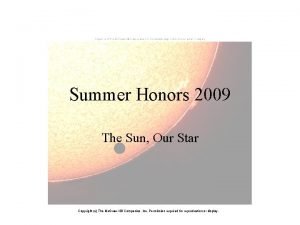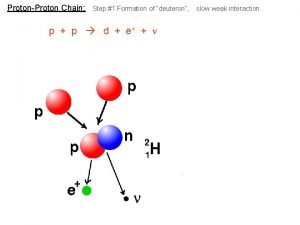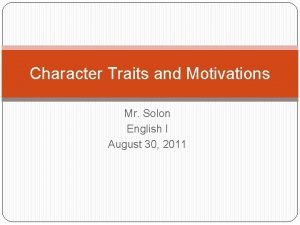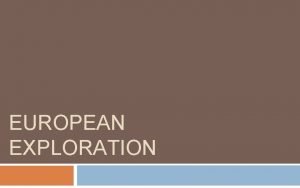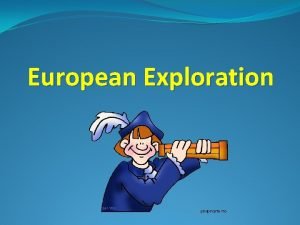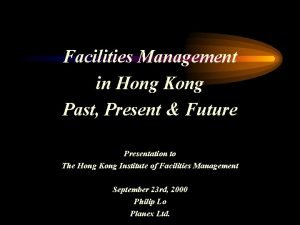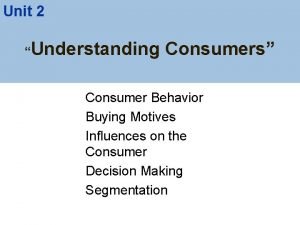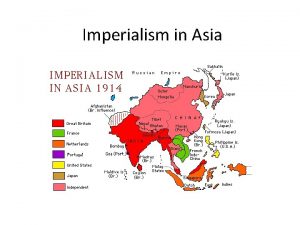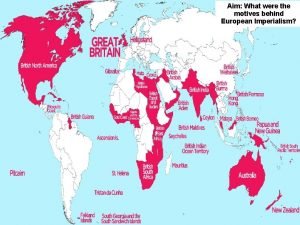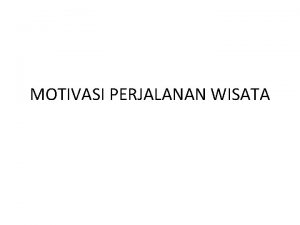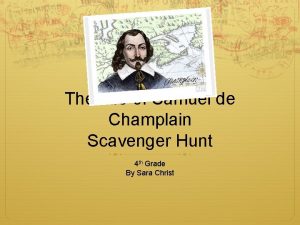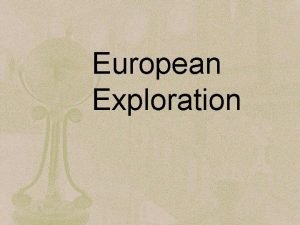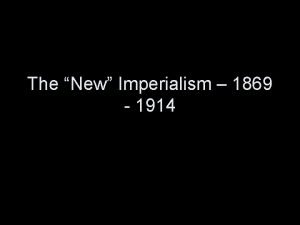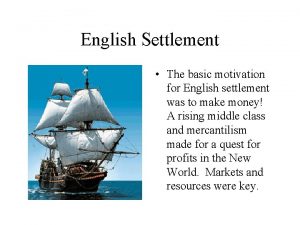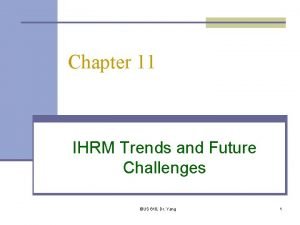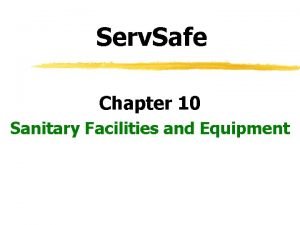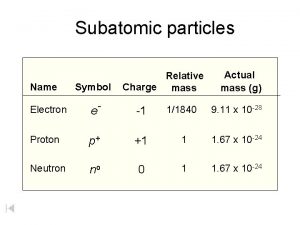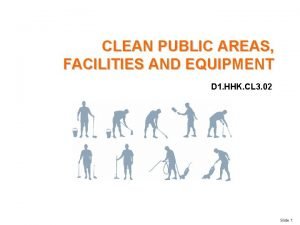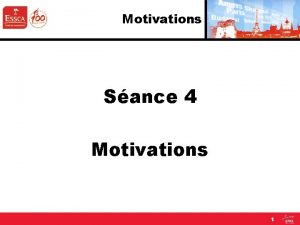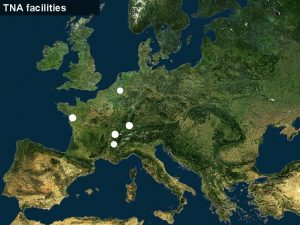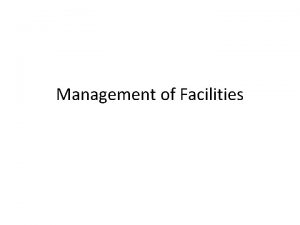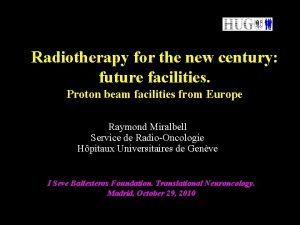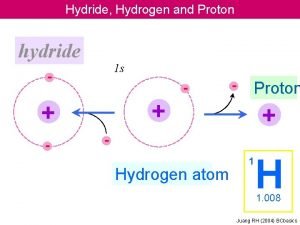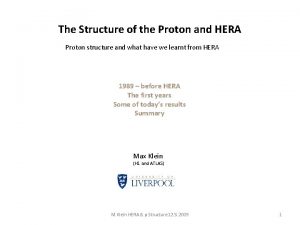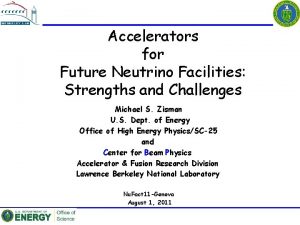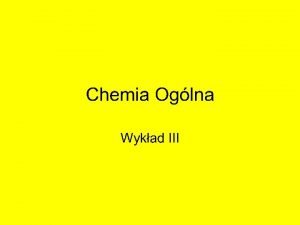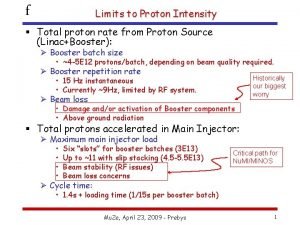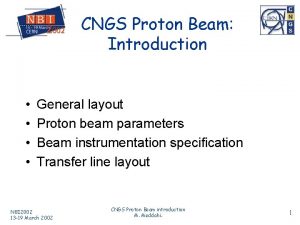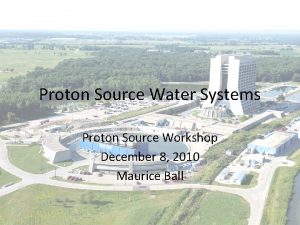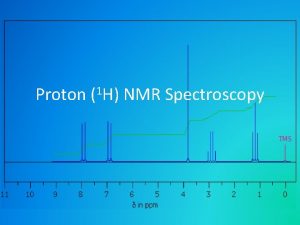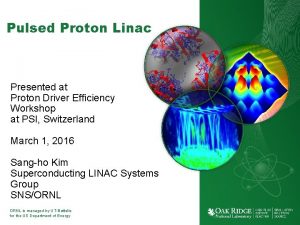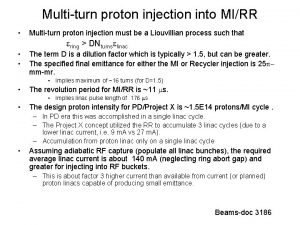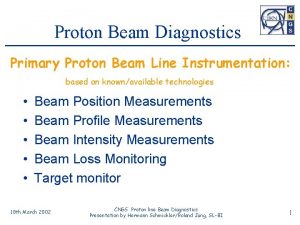Future Facilities motivations and challenges HighEnergy Proton M










![FCC-hh parameters parameter FCC-hh LHC HL LHC energy cms [Te. V] 100 14 dipole FCC-hh parameters parameter FCC-hh LHC HL LHC energy cms [Te. V] 100 14 dipole](https://slidetodoc.com/presentation_image_h2/a687daa7582fd010c52e340a3070341f/image-11.jpg)




















- Slides: 31

Future Facilities: motivations and challenges High-Energy Proton M. Benedikt Colliders g ratefully acknowledging input from FCC global design study team Future High-Energy Proton Colliders Michael Benedikt 2015 CHIPP Annual Meeting 1

Outline • • Motivations High-energy proton colliders Parameters & challenges FCC study status Future High-Energy Proton Colliders Michael Benedikt 2015 CHIPP Annual Meeting 2

Hadron collider motivation: pushing the energy frontier • A very large circular hadron collider seems the only approach to reach 100 Te. V c. m. range in coming decades • Access to new particles (direct production) in the few Te. V to 30 Te. V mass range, far beyond LHC reach. • Much-increased rates for phenomena in the sub-Te. V mass range →increased precision w. r. t. LHC and possibly ILC M. Mangano The name of the game of a hadron collider is energy reach Cf. LHC: factor ~4 in radius, factor ~2 in field O(10) in Ecms Future High-Energy Proton Colliders Michael Benedikt 2015 CHIPP Annual Meeting 3

Strategic Motivation • European Strategy for Particle Physics 2013: “…to propose an ambitious post-LHC accelerator project…. . , CERN should undertake design studies for accelerator projects in a global context, …with emphasis on proton-proton and electron-positron high-energy frontier machines. . …” • ICFA statement 2014: ”…. ICFA supports studies of energy frontier circular colliders and encourages global coordination. …. ” • US P 5 recommendation 2014: ”…. A very high-energy proton-proton collider is the most powerful tool for direct discovery of new particles and interactions under any scenario of physics results that can be acquired in the P 5 time window…. ” Future High-Energy Proton Colliders Michael Benedikt 2015 CHIPP Annual Meeting

Future Circular Collider Study GOAL: CDR and cost review for the next ESU (2018) International FCC collaboration to study: • pp-collider (FCC-hh) main emphasis, defining infrastructure requirements ~16 T 100 Te. V pp in 100 km ~20 T 100 Te. V pp in 80 km • 80 -100 km infrastructure in Geneva area • e+e- collider (FCC-ee) as potential intermediate step • p-e (FCC-he) option Future High-Energy Proton Colliders Michael Benedikt 2015 CHIPP Annual Meeting

Cep. C/Spp. C study (CAS-IHEP) 50 -70 km e+e- collisions ~2028; pp collisions ~2042 Qinhuangdao (秦皇岛) Cep. C, Spp. C 50 km 70 km Future High-Energy Proton Colliders Michael Benedikt 2015 CHIPP Annual Meeting easy access 300 km from Beijing 3 h by car 1 h by train “Chinese Toscana” Yifang Wang

Previous studies in Italy (ELOISATRON 300 km), USA (SSC 87 km, VLHC 233 km), Japan (TRISTAN-II 94 km) ex. ELOISATRON Supercolliders Superdetectors: Proceedings of the 19 th and 25 th Workshops of the INFN Eloisatron Project Many aspects ex. SSC ex. TRISTAN II SSC CDR 1986 of machine design and R&D non-site specific. Tristan-II Exploit synergies with other projects and prev. studies option 2 ex. VLHC Design Study Group Collaboration June 2001. 271 pp. SLAC-R-591, SLAC-R-0591, SLAC-0591, FERMILAB-TM-2149 Future High-Energy Proton Colliders Michael Benedikt 2015 CHIPP Annual Meeting http: //www. vlhc. org/ H. Ulrich Wienands, The F. Takasaki SSC Low Energy Booster: Design and Tristan-II Component Prototypes foroption the First 1 Injector Synchrotron, IEEE Press, 1997

Key challenges for hadron colliders • High energy High field superconducting magnets Large tunnel infrastructures • High luminosity Beam optics Beam current Synchrotron radiation to SC magnets IR shielding and element lifetime • High stored beam energy Machine protection Beam handling Beam injection and dumping Future High-Energy Proton Colliders Michael Benedikt 2015 CHIPP Annual Meeting 8

FCC Scope: Accelerator and Infrastructure FCC-hh: 100 Te. V pp collider as long-term goal defines infrastructure needs FCC-ee: e+e- collider, potential intermediate step FCC-he: integration aspects of pe collisions Push key technologies in dedicated R&D programmes e. g. 16 Tesla magnets for 100 Te. V pp in 100 km SRF technologies and RF power sources Tunnel infrastructure in Geneva area, linked to CERN accelerator complex Site-specific, requested by European strategy Future High-Energy Proton Colliders Michael Benedikt 2015 CHIPP Annual Meeting

Scope: Physics & Experiments Elaborate and document - Physics opportunities - Discovery potentials Experiment concepts for hh, ee and he Machine Detector Interface studies Concepts for worldwide data services Overall cost model Cost scenarios for collider options Including infrastructure and injectors Implementation and governance models Future High-Energy Proton Colliders Michael Benedikt 2015 CHIPP Annual Meeting
![FCChh parameters parameter FCChh LHC HL LHC energy cms Te V 100 14 dipole FCC-hh parameters parameter FCC-hh LHC HL LHC energy cms [Te. V] 100 14 dipole](https://slidetodoc.com/presentation_image_h2/a687daa7582fd010c52e340a3070341f/image-11.jpg)
FCC-hh parameters parameter FCC-hh LHC HL LHC energy cms [Te. V] 100 14 dipole field [T] 16 8. 3 2 main & 2 # IP bunch intensity [1011] 1 1 (0. 2) 1. 1 2. 2 bunch spacing [ns] 25 25 (5) 25 25 luminosity/Ip [1034 cm-2 s-1] 5 20 1 5 170 680 (136) 27 135 events/bx stored energy/beam [GJ] 8. 4 0. 36 0. 7 synchr. rad. [W/m/apert. ] 30 0. 2 0. 35 Future High-Energy Proton Colliders Michael Benedikt 2015 CHIPP Annual Meeting 11

FCC-hh preliminary layout 100 km layout for FCC-hh (different sizes under investigation) Two high-luminosity experiments (A and G) Two other experiments (F and H) Two collimation lines Two injection and two extraction lines Orthogonal functions for each insertion section Future High-Energy Proton Colliders Michael Benedikt 2015 CHIPP Annual Meeting 12

Site study 93 km example • 90 – 100 km fits geological situation well, • LHC suitable as potential injector Future High-Energy Proton Colliders Michael Benedikt 2015 CHIPP Annual Meeting

Key Technology R&D - HFM Nb 3 Sn Conductor R&D • Increase critical current density • Obtain high quantities at required quality • Material Processing • Reduce cost Future High-Energy Proton Colliders Michael Benedikt 2015 CHIPP Annual Meeting 16 T Magnet Design • Develop 16 T short models • Field quality and aperture • Optimum coil geometry • Manufacturing aspects • Cost optimisation 14

FCC Magnet Technology Program Main Milestones of the FCC Magnets Technologies Milestone M 0 M 1 M 2 M 3 M 4 M 5 M 6 M 7 Description Supporting wound conductor program Design of an RMM with existing wire Manufacture and test of a first 16 T RMM Procurement 35 km state of the art high J c wire Design of a 16 T demonstrator with above wire Manufacture and test of the 16 T demonstrator Procurement 70 km of enhanced high J wire Euro. Cir. Col design 16 T accelerator quality model Manufacture and test of the Euro. Cir. Col model Future High-Energy Proton Colliders Michael Benedikt 2015 CHIPP Annual Meeting 15 2016 2017 2018 2019 2020 21 c 15

FCC-hh: some design challenges • Stored beam energy: 8 GJ/beam (0. 4 GJ LHC) = 16 GJ total equivalent to an Airbus A 380 (560 t) at full speed (850 km/h) Ø Collimation, beam loss control, radiation effects: very important Ø Injection/dumping/beam transfer: very critical operations Ø Magnet/machine protection: to be considered early on Future High-Energy Proton Colliders Michael Benedikt 2015 CHIPP Annual Meeting 16

Synchrotron radiation/beam screen High synchrotron radiation load (SR) of protons @ 50 Te. V: ~30 W/m/beam (@16 T) 5 MW total in arcs (LHC <0. 2 W/m) • Beam screen to capture SR and “protect” cold mass • Power mostly cooled at beam screen temperature; • Only minor part going to magnets at 2 – 4 K → Optimisation of temperature, space, vacuum, impedance, e-cloud, etc. Future High-Energy Proton Colliders Michael Benedikt 2015 CHIPP Annual Meeting 17

contributions: beam screen (BS) & cold bore (BS heat radiation) Cryo power for cooling of SR heat Contributions to cryo load: • beam screen (BS) & • cold bore (BS heat radiation) At 1. 9 K cm optimum BS temperature range: 50 -100 K; But impedance increases with temperature instabilities 40 -60 K favoured by vacuum & impedance considerations 100 MW refrigerator power on cryo plant P. Lebrun, L. Tavian Future High-Energy Proton Colliders Michael Benedikt 2015 CHIPP Annual Meeting 18

Beam screen design example Heat transport Vacuum quality R. Kersevan C. Garion L. Tavian, et al. Photon distribution Future High-Energy Proton Colliders Michael Benedikt 2015 CHIPP Annual Meeting New type of ante-chamber - Absorption of synchrotron radiation - Avoid photo-electrons - Help beam vacuum 19

FCC-hh luminosity goals & phases • Two parameter sets for two operation phases: • Phase 1 (baseline): 5 x 1034 cm-2 s-1 (peak), 250 fb-1/year (averaged) 2500 fb-1 within 10 years (~HL LHC total luminosity) • Phase 2 (ultimate): ~2. 5 x 1035 cm-2 s-1 (peak), 1000 fb-1/year (averaged) 15, 000 fb-1 within 15 years • Yielding total luminosity O(20, 000) fb-1 over ~25 years of operation Future High-Energy Proton Colliders Michael Benedikt 2015 CHIPP Annual Meeting

Future High-Energy Proton Colliders Michael Benedikt 2015 CHIPP Annual Meeting fresh in ar. Xiv 21

luminosity evolution over 24 h radiation damping: t~1 h for both phases: beam current 0. 5 A unchanged! total synchrotron radiation power ~5 MW. phase 1: b*=1. 1 m, DQtot=0. 01, tta=5 h phase 2: b*=0. 3 m, DQtot=0. 03, tta=4 h Future High-Energy Proton Colliders Michael Benedikt 2015 CHIPP Annual Meeting

integrated luminosity / day phase 1: b*=1. 1 m, DQtot=0. 01, tta=5 h Future High-Energy Proton Colliders Michael Benedikt 2015 CHIPP Annual Meeting phase 2: b*=0. 3 m, DQtot=0. 03, tta=4 h 23

CERN Circular Colliders + FCC 1980 1985 1990 1995 2000 2005 2010 2015 2020 2025 2030 2035 20 years Constr. Design Physics Proto LEP Construction Design FCC Future High-Energy Proton Colliders Michael Benedikt 2015 CHIPP Annual Meeting LHC Physics Construction Design Proto Physics Construction HL-LHC Physics

Study time line towards CDR 2014 Q 1 Q 2 Q 3 2015 Q 4 Q 1 Q 2 Q 3 2016 Q 4 Q 1 Q 2 Q 3 2017 Q 4 Q 1 Q 2 Q 3 2018 Q 4 Q 1 Q 2 Q 3 Study plan, scope definition Explore options “weak interaction” FCC Week 2015: work towards baseline conceptual study of baseline “strong interact. ” FCC Week 2016 Progress review FCC Week 17 & Review Cost model, LHC results study re-scoping? Elaboration, consolidation FCC Week 2018 contents of CDR Report CDR ready Future High-Energy Proton Colliders Michael Benedikt 2015 CHIPP Annual Meeting Q 4

Collaboration Status • • 57 institutes 22 countries + EC Status: July 30, 2015 Future High-Energy Proton Colliders Michael Benedikt 2015 CHIPP Annual Meeting EDMS 1523555 V 1. 3

FCC Collaboration Status 57 collaboration members & CERN as host institute, 29 ALBA/CELLS, Spain GWNU, Korea KIAS, Korea June 2015 Ankara U. , Turkey U Geneva, Switzerland U Belgrade, Serbia U Bern, Switzerland BINP, Russia CASE (SUNY/BNL), USA CBPF, Brazil CEA Grenoble, France CEA Saclay, France CIEMAT, Spain CNRS, France Cockcroft Institute, UK U Colima, Mexico CSIC/IFIC, Spain TU Darmstadt, Germany DESY, Germany TU Dresden, Germany Duke U, USA EPFL, Switzerland Future High-Energy Proton Colliders Michael Benedikt 2015 CHIPP Annual Meeting Goethe U Frankfurt, Germany GSI, Germany Hellenic Open U, Greece HEPHY, Austria U Houston, USA IFJ PAN Krakow, Poland INFN, Italy INP Minsk, Belarus U Iowa, USA IPM, Iran UC Irvine, USA Istanbul Aydin U. , Turkey JAI/Oxford, UK JINR Dubna, Russia FZ Jülich, Germany KAIST, Korea KEK, Japan King’s College London, UK KIT Karlsruhe, Germany Korea U Sejong, Korea MEPh. I, Russia MIT, USA NBI, Denmark Northern Illinois U. , USA NC PHEP Minsk, Belarus U. Liverpool, UK U Oxford, UK PSI, Switzerland Sapienza/Roma, Italy UC Santa Barbara, USA U Silesia, Poland TU Tampere, Finland TOBB, Turkey U Twente, Netherlands Wroclaw UT, Poland 27

Euro. Cir. Col EU Horizon 2020 Grant EC contributes with funding to FCC-hh study • Core aspects of hadron collider design: arc & IR optics design, 16 T magnet program, cryogenic beam vacuum system • Recognition of FCC Study by European Commission Future High-Energy Proton Colliders Michael Benedikt 2015 CHIPP Annual Meeting

Euro. Cir. Col Consortium + Associates CERN TUT CEA CNRS KIT TUD INFN UT ALBA IEIO Finland France Germany Italy Netherlands Spain CIEMAT STFC UNILIV UOXF KEK EPFL UNIGE NHFML-FSU BNL FNAL LBNL Spain United Kingdom Japan Switzerland USA USA Future High-Energy Proton Colliders Michael Benedikt 2015 CHIPP Annual Meeting Japan KEK Finland TUT United Kingdom Netherlan ds STFC, UNILIV, UOXF German UT France CEA, CNRS CERN y KIT, TUD Switzerlan d Italy INFN Spain ALBA, CIEMAT Consortium Beneficiaries, signing the Grant Agreement EPFL, UNIGE

Conclusions • There are strongly rising activities in energy-frontier circular colliders worldwide. • The FCC collaboration is hosted by CERN and will conduct an international study for the design of Future Circular Colliders (FCC). • The design of high energy proton colliders presents many challenging R&D requirements in SC magnets, beam handling and several other technical areas. • Global collaboration in physics, experiments and accelerators and the use of all synergies is essential to move forward. Future High-Energy Proton Colliders Michael Benedikt 2015 CHIPP Annual Meeting 30

FCC Week 2016 Rome, 11 -15 April 2016 Future High-Energy Proton Colliders Michael Benedikt 2015 CHIPP Annual Meeting 31
 Proton proton chain
Proton proton chain Proton proton chain
Proton proton chain Proton proton chain
Proton proton chain Future perfect continuous tense rules
Future perfect continuous tense rules Future simple continuous perfect
Future simple continuous perfect Character traits and motivations
Character traits and motivations God glory gold
God glory gold Three g s
Three g s Sss facility management services
Sss facility management services Buying motivations
Buying motivations British imperialism in asia
British imperialism in asia Motivations for imperialism in asia
Motivations for imperialism in asia Motivasi wisatawan adalah
Motivasi wisatawan adalah What did samuel de champlain accomplish
What did samuel de champlain accomplish John cabot css
John cabot css Motives for imperialism
Motives for imperialism English motivations for settlement
English motivations for settlement Ihrm trends and future challenges
Ihrm trends and future challenges Ihrm trends and future challenges
Ihrm trends and future challenges Future continuous and future perfect
Future continuous and future perfect Tenses in english
Tenses in english Future plans and finished future actions
Future plans and finished future actions Budoucí čas will
Budoucí čas will 1 2 3 kondicional u engleskom jeziku
1 2 3 kondicional u engleskom jeziku What is coving servsafe
What is coving servsafe Describe neutrons.location: charge: mass:
Describe neutrons.location: charge: mass: Present perfect future tense
Present perfect future tense What is use in past tense
What is use in past tense Future nurse programme
Future nurse programme Present, past, future continuous
Present, past, future continuous Travel present continuous tense
Travel present continuous tense Public area cleaning equipment
Public area cleaning equipment
